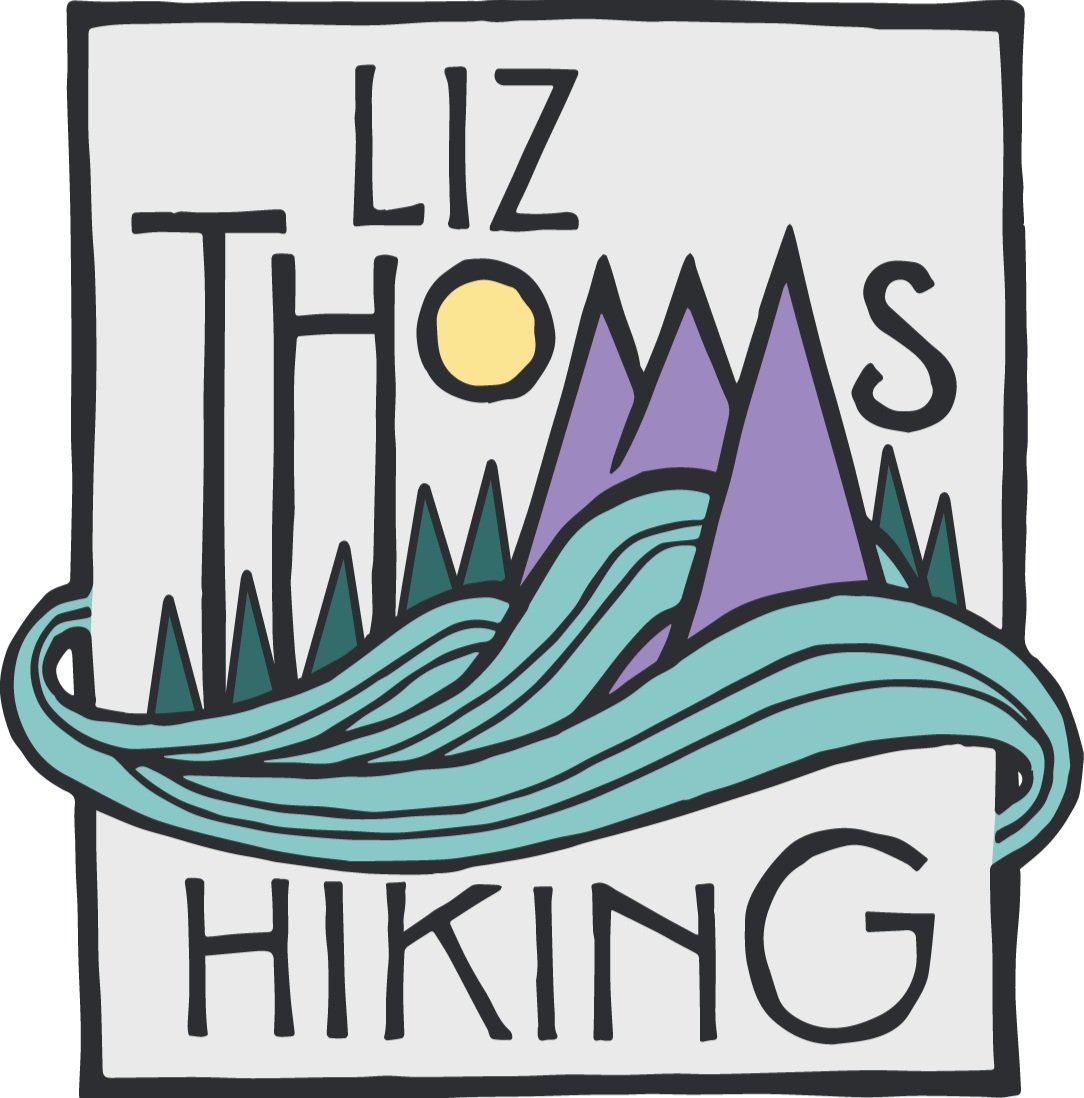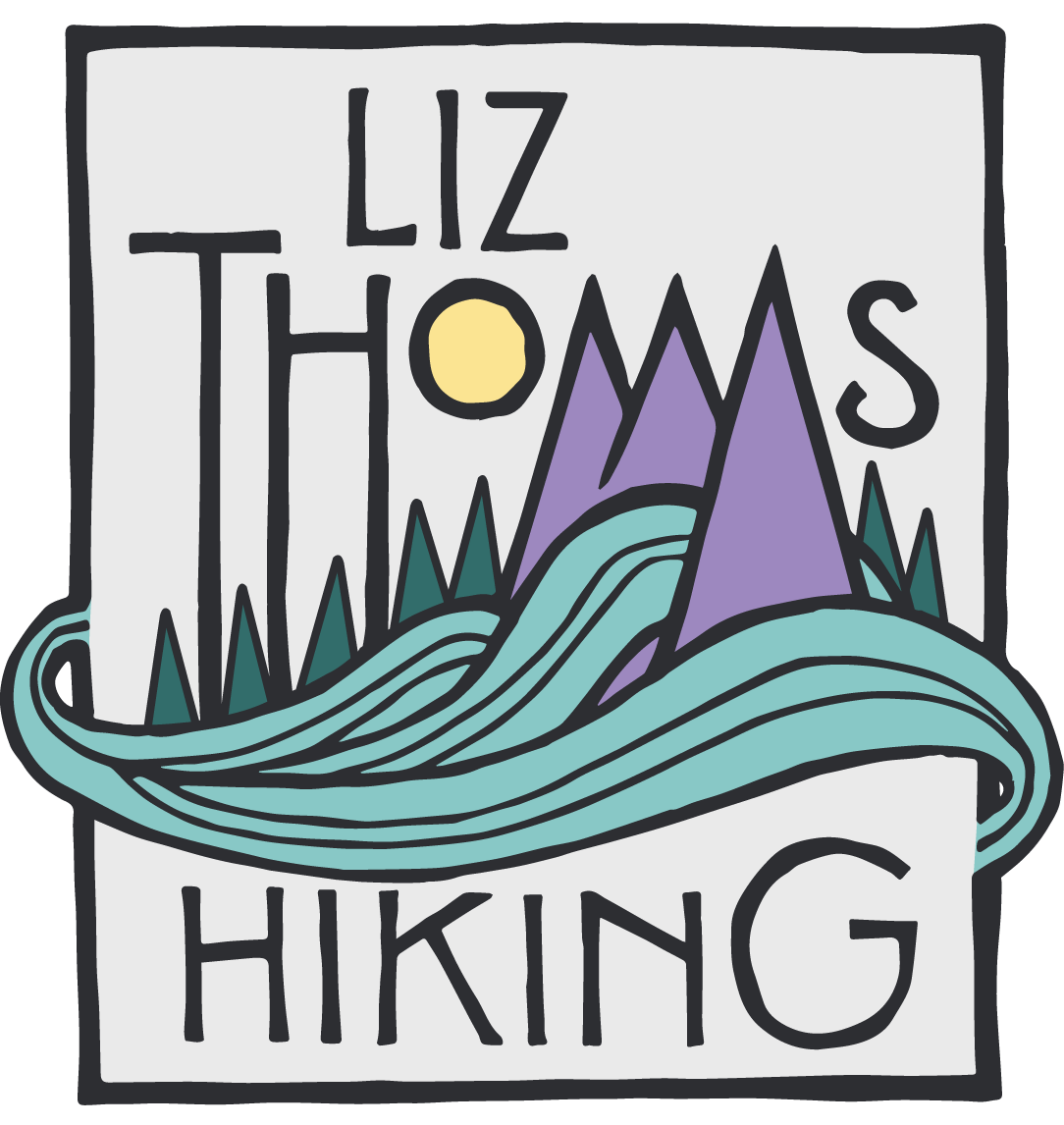How to Hike your biggest day yet
How to hike your biggest mile day yet
However you define “big miles,” here are tips to do your first 10, 20, 30 or 50-mile day hike.
A few weeks ago, I posted a story on Instagram about re-hiking Cactus to the Clouds, a dayhike called “one of America’s hardest and deadliest” by Backpacker Magazine.
It got me to thinking about the first time I hiked that 21-mile, 10500’ gain trail and the months of prep I put into it. I diligently set alarms and climbed mountains in the dark before work. I researched and hiked increasingly difficult trails, setting aside weekend after weekend for nothing but training.
Since then, I’ve upped my definition for “big mile day” to ~50 milers like the Grand Canyon Rim-to-Rim-to-Rim hike. But the training and thought I put into prepping for a big mile trip is the same.
Training:
Maintain a base fitness level:
The best way to prepare for a big mile hike is to maintain a base fitness level for big mile hikes. My friend and hiking mentor, guidebook author David Harris, told me early on in my hiking career that doing one 5,000 foot gain hike every month is all the body needs to retain muscle memory and strength to do that same feat again. I’m not sure where he got that number, but presumably the same holds for any big elevation, whether it’s 2,000 feet of gain or 10,000.
Build a hiking calendar
Get a guidebook to your area (I highly recommend the paper version) and a calendar. Write down the hikes you want to do in ascending order of difficulty with the BIG HIKE as your goal (keeping in mind some hikes aren’t do-able in all seasons).
All the hikes on this list don’t have to be difficult—just places you know you want to visit. Start with the easiest hike on your list—the one that you think you can do right now—and reserve a date on your calendar to do it. Write in the next hardest hike for a week or two later.
By committing dates and dedicating them to specific hikes, you’re less likely to let life get in the way of your hiking training. You also are more likely to invite friends to come along on that hike, which will keep you accountable. You’ll find that although your hikes will get harder and harder, your body will adjust. Note: it’s easy to say you want to do every hike in your guidebook, but try to keep your list manageable to what you can do in the season.
Ramp it up
About two weeks before my big goal hike, I’ll walk what I call a Baby Big Mile Day. It’s another trail that’s approximately 75% as difficult as my Big Mile Goal hike.
For example, to practice for my first Cactus to the Clouds (21 miles with 10500’ gain), my Baby Big Mile Day was Bear Canyon on Mt Baldy (16 miles, 6000’ of gain).
To train for Bear Canyon on Mt. Baldy, my Baby Big Mile Day was Mt. Baldy via Manker Flats (14 miles, 3700’ of gain). These are examples from when I was first getting into increasing my mileage, but I’ve used similar formulas for hiking in Colorado, too.
Figure out the gear
I think something folks don’t talk a lot about when it comes to big mile days is how to minimize the amount of mental and physical energy expended on anything but moving forward.
That means the gear that you wear and carry should advance you—not hinder your performance.
If you find yourself spending a lot of your hiking time worrying about how a shoe is rubbing or how you are cold or futzing with toggles and buckles, that’s energy you could be spending on pushing forward.
Choose gear that makes you feel comfortable while hiking.
Use shorter practice hikes to make sure clothing and gear you have fits you right and that you’re using it in the right circumstances. Gear and clothing, especially shoes, should feel comfortable and shouldn’t rub or chafe.
Test and experiment with new gear on practice hikes. For example, practice hike is where I first learned that I worry and hurt less from sunburn when I wear the lightweight wide-brimmed Sunday Afternoons Ultralight vs. my old beloved Headsweats visor. When I got to Cactus to the Clouds, sunburn was one less thing I worried about.
Check out gear lists from other people who have done the big hike you want to do.
Try to find gearlists from people who hiked at the same time of year you plan to attempt your big route. For example, I wrote my Rim to Rim to Rim gear list for the Grand Canyon for hiking in April or May, but someone attempting that hike earlier in the year would want to include microspikes to deal with ice and someone heading later in the year would want more water.
Food and Nutrition
Hiking big mile days requires big nutrition and big hydration. Plan to eat and drink more than you would for a usual dayhike—and carry and pack your pack accordingly. On one of my first big hikes, I made the mistake of carrying too little food–some crackers and dried cranberries for a 16 mile hike. I often scheme in the back of my head that if I don’t carry enough food on a hike, maybe I’ll lose some weight. But this is a HORRIBLE idea for anyone who wants to not feel like garbage on their hike. To succeed on a big mile hike, bring more than you think you need.
Pack things that you will actually eat…
Yeah, those sprouted kale seed chips might be ok at home but will look like cardboard on trail. That doesn’t mean you can’t eat healthy on trail. It just means you need to be more creative understanding your palate. Recently, I’ve come to carrying roasted sweet potatoes and pickled eggplant norimaki.
But keep in mind that appetites change when you are exerting yourself.
I never eat boiled potatoes on or off trail, but I learned from a thru-hiker-turned-ultramarathoner friend that at maximum exertion, many people find salt-covered-spuds palatable.
I took some along on a Baby Big hike to train before Rim to Rim to Rim. At full-exertion, the sight of my bars was puke-worthy and my chocolate had melted. But…the potatoes were heavenly. For more info on this, check out my Rim to Rim to Rim nutrition post.
The food I brought with me on Rim to Rim to Rim in a day. I didn’t end up eating everything here, so some of this was dead weight.
Adjust your idea of what it means to hike
For most folks, a dayhike is something you do after brunch but before beer with friends.
With a big mile day hike, the timeline is different.
You should expect to spend all day walking with fewer, shorter breaks.
This may be the most important take-away and the hardest transition to take on, but slow and steady wins the race–or gets to the top of the mountain.
Making a big mile day isn’t about how fast or strong you are. It’s about staying dedicated to your goal.
TL;DR
Working towards a big hiking goal requires dedication, planning, and a little luck. By prioritizing a hiking schedule, you’ll get your food and gear likes-and-dislikes down and your body will get accustomed to hiking bigger and bigger days.








